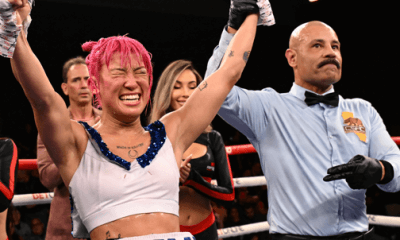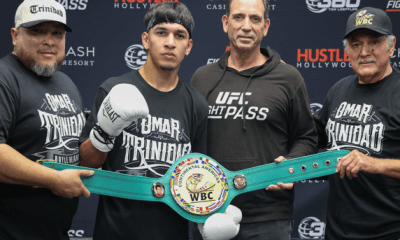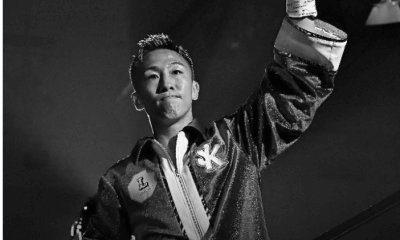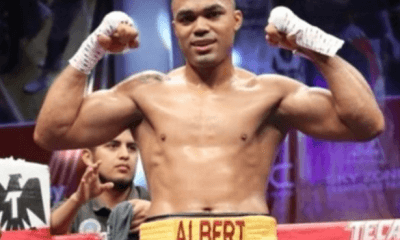Featured Articles
Catching Up with Jonnie Rice as He Prepares for His Rematch with Michael Coffie
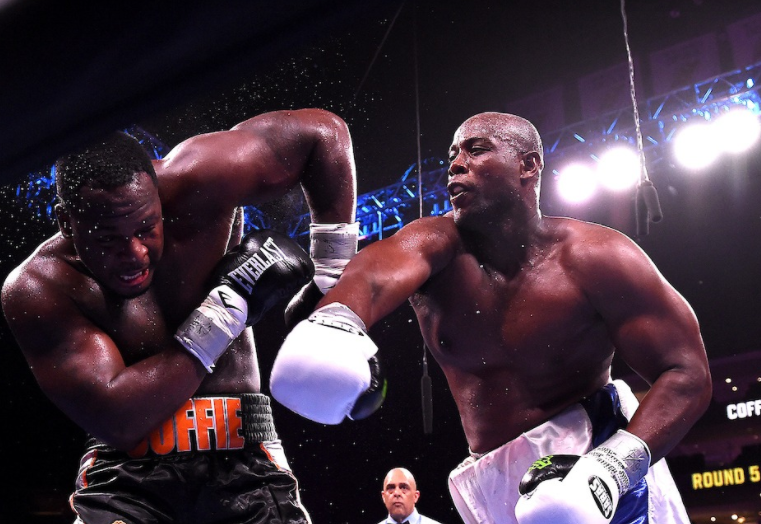
Catching Up with Jonnie Rice as He Prepares for His Rematch with Michael Coffie
There are different kinds of upsets. Some of the most storied upsets in American sports annals were actually quite mundane when measured against the betting line. The bigger the stage, the greater the shared element of surprise when an underdog brings home the bacon. Then there are upsets that are purely numerical. The magnitude isn’t measured by whether it provokes a great yammering, but simply by the odds displayed on a wagering board.
By this second barometer, Jonnie Rice may have forged the biggest upset of 2021 when he stopped Michael Coffie in the fifth round at Newark, New Jersey, on July 31. Coffie was chalked a 25/1 favorite at several off-shore sports books. Factoring in the straddle, a wager on Rice would have returned $15 for every dollar that was wagered.
Michael Coffie, an ex-Marine, was 12-0 heading in and was coming off a brutal third round knockout of Darmani Rock, a well-regarded 24-year-old prospect from Philadelphia with a 17-0 pro record and a strong amateur pedigree. True, Coffie was relatively untested, but on the surface it was hard to fancy Rice who was 13-6-1, hadn’t defeated anyone of note, and had taken the fight on short notice when Coffie’s original opponent Gerald Washington flunked his COVID test.
With the advantage of 20/20 hindsight, however, it’s plain that the bet-takers didn’t do their homework. Five of Rice’s six defeats had come at the hands of opponents that were undefeated. He had gone the distance with Tony Yoka and Efe Ajagba and had lasted into the seventh round against fearsome Arslanbek Makhmudov who has 10 first-round knockouts to his credit in only 13 pro starts.
Rice was battle-tested in the gym. He had worked in the camps of Filip Hrgovic and Joe Joyce and had sparred many rounds with Luis Ortiz, Tyson Fury and Mike Hunter. Michael Coffie had worked with Deontay Wilder, Jarrell “Big Baby” Miller and Adam Kownacki, but Rice’s sparring partners were certainly a more formidable lot.
In all sports, including boxing, “strength of schedule” is a salient variable in the handicapping equation.
During the COVID era, promoters have taken to keeping an alternate on standby in case of a late scratch. Against Coffie, Jonnie Rice was not your conventional late sub. He knew that he might be summoned out of the bullpen, so to speak, and never stopped training.
His trainers Rodney Crisler and Bones Adams felt that Jonnie had become too defense-oriented. Against Ajagba, he had been reluctant to let his hands go until late in the fight and then he had more than held his own with the highly-touted Nigerian. It was as if he had fallen into the rut so common to “B-side” fighters whereby they feel pressure to perform in the manner expected of them by the promoter/matchmaker that is paying their rent.
Against Michael Coffie, Rice promised to be more offense-minded and proved to be a man of his word. He took the fight to Coffie from the opening bell. According to CompuBox, Rice out-landed Coffie 68-40 with a 54-26 edge in power punches. In the fifth round, with Coffie pawing at his left eye which was nearly shut and offering little resistance, the ref waived it off.
Now Jonnie Rice must prove that it was no fluke. In case you missed it, he and Coffie will be locking horns again on New Year’s Day as part of an all-heavyweight FOX Sports pay-per-view extravaganza in primetime from the Seminole Hard Rock Hotel and Casino in Hollywood, Florida. Luis “King Kong” Ortiz squares off against Charles Martin in the main go. (The telecast goes head-to-head against the Sugar Bowl which isn’t on the National Championship docket this year.)
Getting to Know Jonnie Rice
Jonathan Micah “Jonnie” Rice turned 34 in February. He was born and raised in Columbia, South Carolina, the son of a Baptist minister who passed away when Jonnie was 15.
Rice has a versatile sports background. He played some hoops at Winthrop, a D-1 school in Rock Hill, South Carolina, and played semi-pro football. And he’s not the only athlete in his extended family. The man he grew up calling Uncle Ed is none other than Jim Rice, more formally James Edward Rice, the former star outfielder for the Boston Red Sox who is enshrined in the Baseball Hall of Fame. (Repeating what his dad told him, Jonnie says that Jim Rice sharpened his batting eye as a young boy hitting pebbles with a broomstick.)
There is an international data bank for athletes of various stripes; a digital warehouse for scouts. Michael King found him there.
Fourteen years ago, Michael King had an epiphany. It struck him that there were a lot of great college athletes who just weren’t quite good enough to make the NFL or the NBA and that the next heavyweight champion could be culled from this rich talent pool. To this end, King founded a company named “All American Heavyweights” and built a mammoth, state-of-the-art training facility in Carson, a city in Los Angeles County. He called it The Rock.
King had the resources to pull it off. He was the President of King World, a company founded by his father. King World syndicated Oprah Winfrey’s talk show and the iconic game shows “Wheel of Fortune” and “Jeopardy.” Michael King was rolling in dough.
King passed away in 2015 at age sixty-seven. He never came anywhere close to earning back his investment in boxing. The only heavyweights of note to emerge from The Rock were two-time world title challenger Dominic Breazeale and the aforementioned Charles Martin who had a cup of coffee as a world title-holder. His reign lasted only 85 days.
Although it certainly must be considered a longshot, perhaps Jonnie Rice will come to be seen as the best of Michael King’s “All American” alumni.
Rice prepared for the Makhmudov fight in Las Vegas and decided that this was where he needed to be to make headway in his career. He left behind his girlfriend in Los Angeles, a Swedish exchange student at Cal State-Northridge.
Absence, as they say, makes the heart grow fonder. But reconnecting with her was complicated. After Jonnie put down roots in Las Vegas, she returned to Sweden.
Rice spent the bulk of his purse from the Coffie fight on what would prove to be something of a wild goose chase. He spent an entire month in Sweden, returning without her, cognizant that he might never see her again. He hurt in a way that made Tyson Fury’s punches pin-pricks by comparison.
Jonnie Rice is a big bear of a man. He carries about 270 pounds on his six-foot-five frame. If one were to encounter him for the first time in a dark alley, one would make a quick U-turn. But that wouldn’t be necessary. It has been observed that many prizefighters have a tender side; an attribute more striking because of their violent profession. Jonnie Rice has a tender side.
Unlike career women, men don’t have biological clocks that begin to tick as they approach the end of their child-bearing years. But many men, as they slip into their mid-thirties, feel a pull to settle down and start a family. It’s not something that men readily talk about, but Jonnie Rice doesn’t shrink from acknowledging that he yearns to find the right woman and become a father.
There’s a certain irony there in that Rice is whelmed by voluptuous women at work. In common with many MMA fighters based in Las Vegas, he works the night shift as a bouncer/doorman at a so-called gentleman’s club. He doesn’t have the luxury of giving boxing his full attention.
Jonnie Rice picked the right moment to come out of the shadows. His bout with Michael Coffie was the main event of a show nationally televised on FOX. As such, viewers got to see more of him than just the fisticuffs. A scene in his dressing room before the fight undoubtedly turned many people off. Looking straight into the camera, Jonnie took a bunch of bills out of his wallet and made it rain in a Mayweather-ish fashion.
“I wasn’t expecting the camera crew to barge in like that,” says Rice. “At the time, I was getting text messages from friends and I was very nervous. I decided I would give them a show because I knew that’s what they wanted.”
He may have lost some potential fans with that display, but he gained new fans in his post-fight interview. Standing in the center of the ring, his body dripping with sweat, Rice gave an extemporaneous speech that would have been the envy of any motivational speaker. “The whole key to life is getting better every day you walk this earth…I didn’t let my past dictate my future,” he told Heidi Androl. “I’m always looking to learn from the greats as well as my peers…I’ve got a great team around me that believe in me. But I have to believe in me too and you have to believe in you to be successful…{What I learned tonight} is that if I do the work, I will see the results; I will reap what I sow and that’s a universal rule for everybody.”
“I spoke from the heart,” says Rice, re-visiting that moment.
Now comes the hard part, proving to himself and others that he isn’t a one-trick pony. The day of judgment comes on Jan. 1 in Florida. And if he comes up short, that would be insignificant in the larger scheme of things if he satisfies his yearning to become a good father.
Check out more boxing news on video at the Boxing Channel
To comment on this story in the Fight Forum CLICK HERE
-

 Featured Articles3 weeks ago
Featured Articles3 weeks agoThe Hauser Report: Zayas-Garcia, Pacquiao, Usyk, and the NYSAC
-

 Featured Articles2 weeks ago
Featured Articles2 weeks agoOscar Duarte and Regis Prograis Prevail on an Action-Packed Fight Card in Chicago
-

 Featured Articles1 week ago
Featured Articles1 week agoThe Hauser Report: Cinematic and Literary Notes
-

 Book Review5 days ago
Book Review5 days agoMark Kriegel’s New Book About Mike Tyson is a Must-Read
-

 Featured Articles4 weeks ago
Featured Articles4 weeks agoManny Pacquiao and Mario Barrios Fight to a Draw; Fundora stops Tim Tszyu
-

 Featured Articles4 weeks ago
Featured Articles4 weeks agoArne’s Almanac: Pacquiao-Barrios Redux
-

 Featured Articles3 weeks ago
Featured Articles3 weeks agoRemembering Dwight Muhammad Qawi (1953-2025) and his Triumphant Return to Prison
-
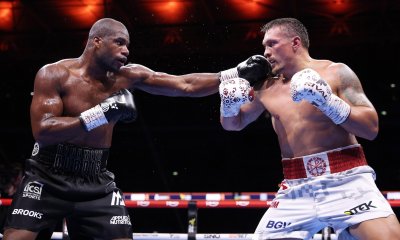
 Featured Articles4 weeks ago
Featured Articles4 weeks agoOleksandr Usyk Continues to Amaze; KOs Daniel Dubois in 5 One-Sided Rounds


